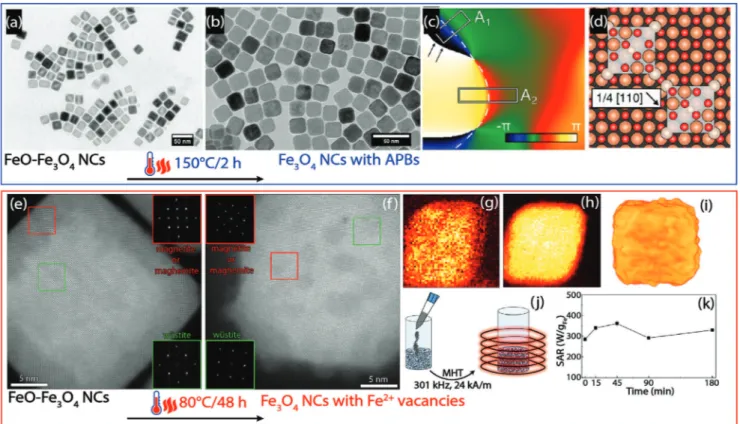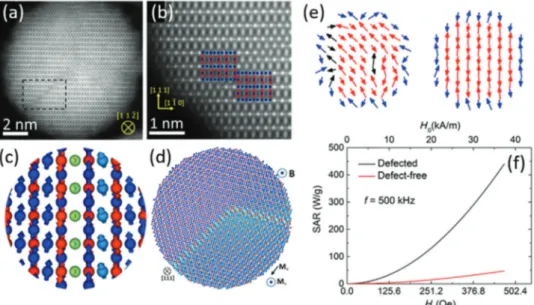www.advancedscience.com
Embracing Defects and Disorder in Magnetic Nanoparticles
Aidin Lak,* Sabrina Disch,* and Philipp Bender*
Iron oxide nanoparticles have tremendous scientific and technological potential in a broad range of technologies, from energy applications to biomedicine. To improve their performance, single-crystalline and defect-free nanoparticles have thus far been aspired. However, in several recent studies, defect-rich nanoparticles outperform their defect-free counterparts in magnetic hyperthermia and magnetic particle imaging (MPI). Here, an overview on the state-of-the-art of design and characterization of defects and resulting spin disorder in magnetic nanoparticles is presented with a focus on iron oxide nanoparticles. The beneficial impact of defects and disorder on intracellular magnetic hyperthermia performance of magnetic nanoparticles for drug delivery and cancer therapy is emphasized. Defect-engineering in iron oxide nanoparticles emerges to become an alternative approach to tailor their mag- netic properties for biomedicine, as it is already common practice in established systems such as semiconductors and emerging fields including perovskite solar cells. Finally, perspectives and thoughts are given on how to deliberately induce defects in iron oxide nanoparticles and their potential implications for magnetic tracers to monitor cell therapy and immunotherapy by MPI.
1. Introduction
Despite their common negative connotation, defects and disor- der can be highly desirable in nature and materials design.
[1]Dr. A. Lak
Department of Physics and Center for NanoScience LMU Munich
Amalienstr. 54, Munich 80799, Germany E-mail: lak.aidin@lmu.de
Dr. S. Disch
Department für Chemie Universität zu Köln
Greinstraße 4-6 Köln 50939, Germany E-mail: sabrina.disch@uni-koeln.de Dr. P. Bender
[+]Department of Physics and Materials Science University of Luxembourg
162A avenue de la FaÏencerie Luxembourg L-1511, Grand Duchy of Luxembourg
E-mail: philipp.bender@uni.lu
The ORCID identification number(s) for the author(s) of this article can be found under https://doi.org/10.1002/advs.202002682
[+]




